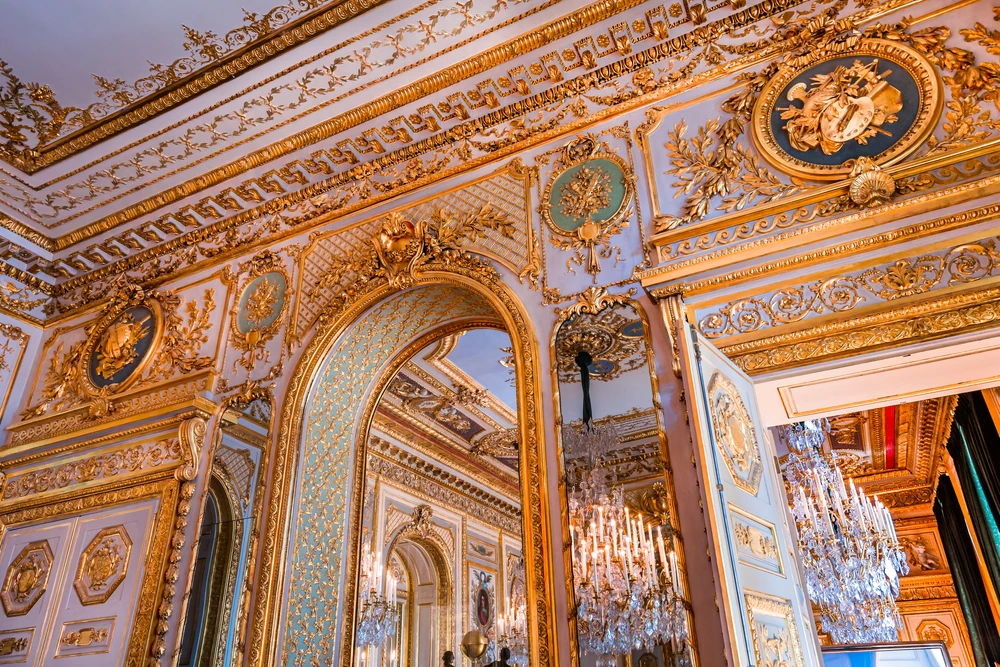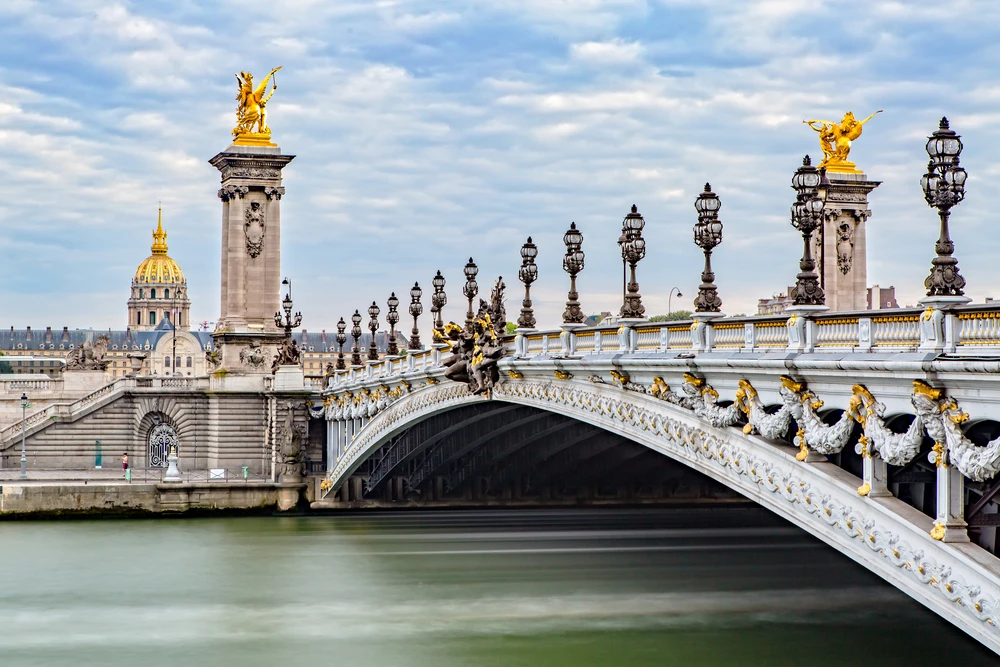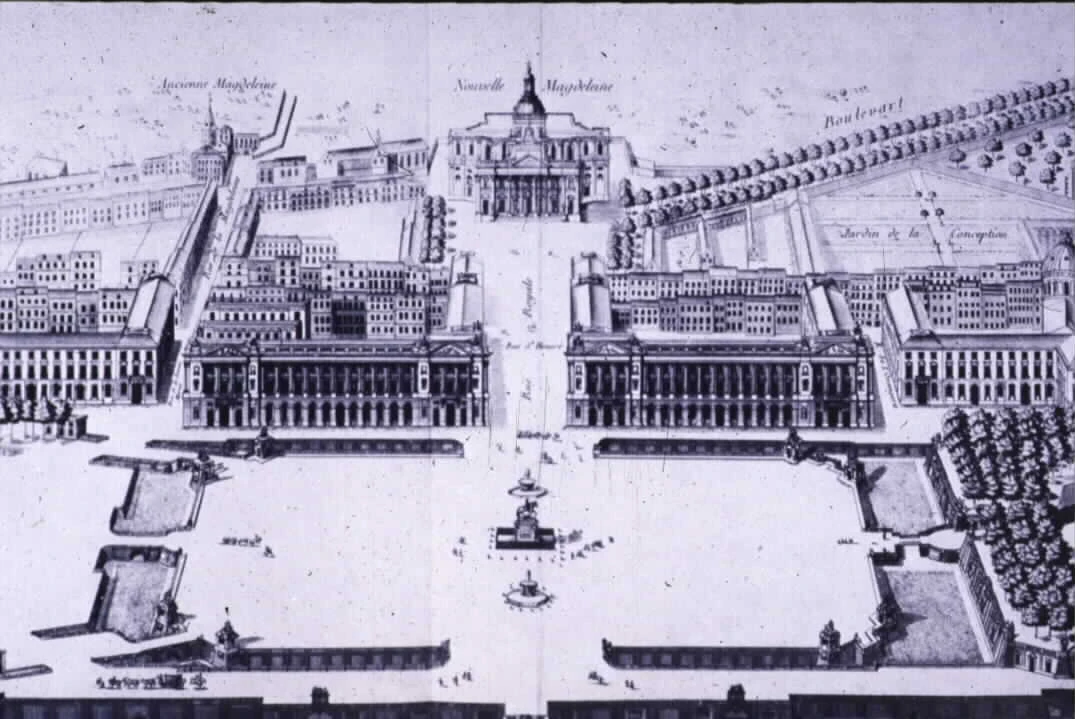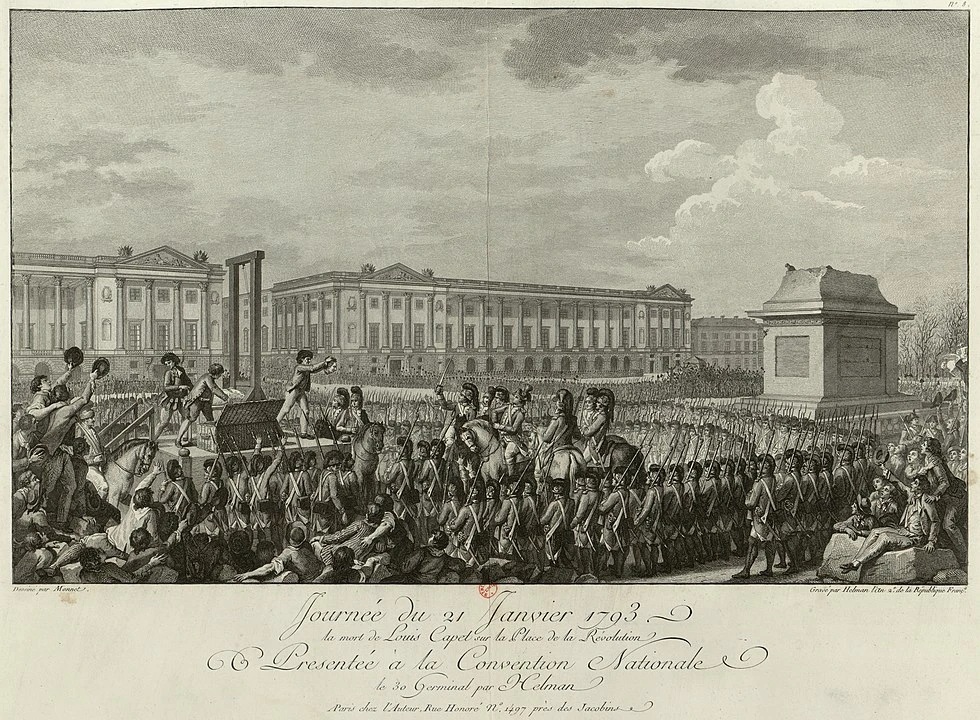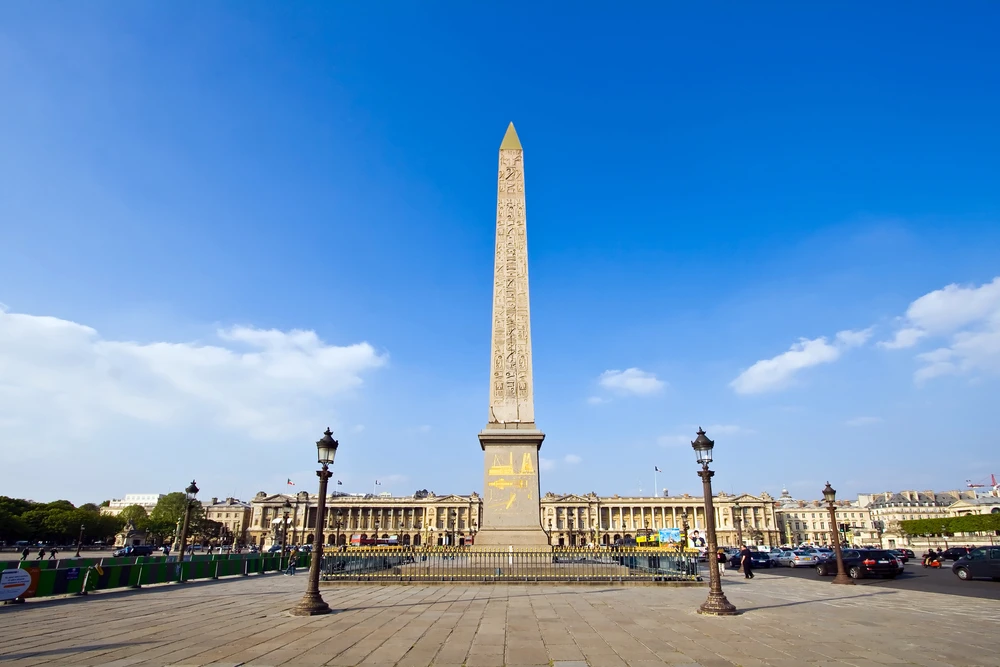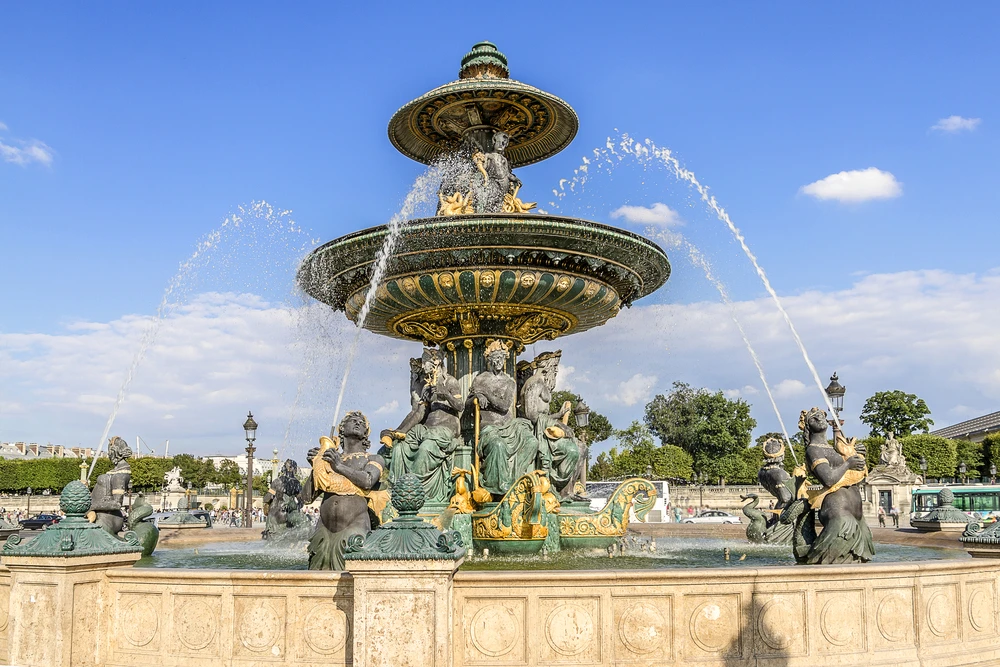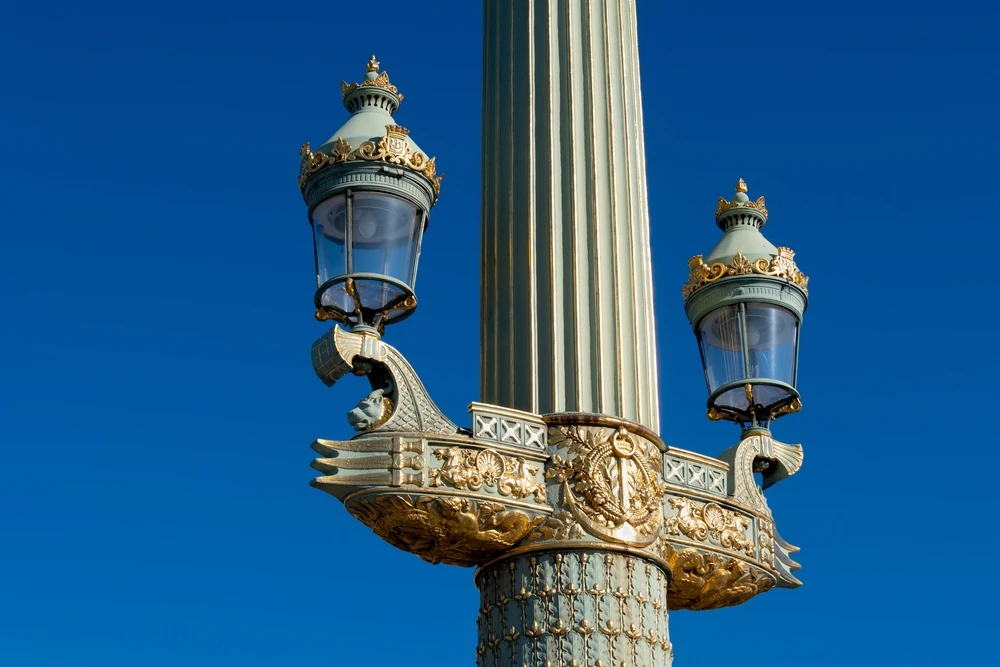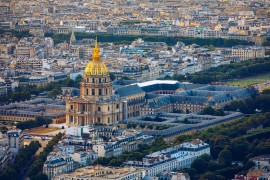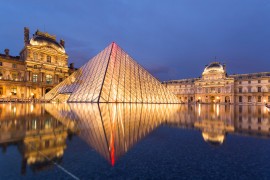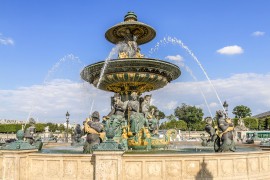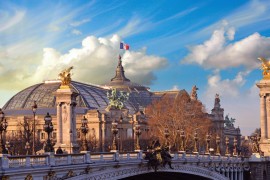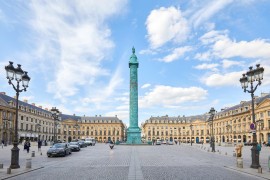What we see there:
The obelisk and the fountains
It is necessary to take time to admire the whole of the place. The fountains, the lampposts, the obelisk which is in the center. It is one of the two obelisks offered to France by the viceroy of Egypt Mehmet ALI. The other one remained in Thebes, and France did not give it up officially... That in 1981 by the voice of François Mittérand. A clock had been offered to the City of Cairo in exchange. It would never have worked. It culminates at 33 meters high and weighs 222 tons. It was renovated in 2022.
The Crillon Hotel
The facade dates from 1758, it was designed and built by Ange-Jacques GABRIEL. The back was built in 1775 by Louis-François TROUARD. Property of the Dukes of Aumont, then of the Counts and Dukes of Crillon (who left their name). It is a hotel since 1909. It has hosted many personalities such as Churchill, Joffre, Hassan II of Morocco or Madonna.
hôtel Crillon place de la Concorde / Photo par Tutti Frutti/Schutterstock.com
The Hotel de la Marine
Originally a furniture depository of the Crown, which stored its furniture, collections and crown jewels, it became the Ministry of the Navy. It was here that France abolished slavery on April 27, 1848. Completely renovated, you must visit it to discover the art of living of the French elite of the 18th century.
interieur de l'hôtel de la marine place de la Concorde / Photo par Isogood_patrick/Schutterstock.com
Around the Concorde
You can walk to the Tuileries gardens, and even to the Louvre which is not far away through the gardens, or by the rue de Rivoli. You can store in the chic boutiques of rue royale or rue Saint Honoré. You can enjoy yourself at Maxim's, or at the Buddha Bar not far away.
Pont Alexandre III par Shutterstock
On the cultural side, you can visit the Madeleine Church. The Elysee Palace is very close (the gate of the cock, the back entrance of the Palace, is very close to the Concorde). Nearby there are also the Champs-Elysées, the Grand Palais, the National Assembly. You can also discover the Alexandre III bridge, magnificent, and probably the most beautiful bridge in Paris. Finally, there is the Orsay Museum with sublime paintings such as Edouard Manet's "Le déjeuner sur l'herbe" and works by Cezannes, Van Gogh...
History of the Place de la Concorde
La place de la Concorde / Photo par Leonid Andronov
Long a swamp
The place where the Place de la Concorde is located has been empty for a long time. It must be said that it was not very attractive since it was a kind of swamp subjected to the frequent overflows of a Seine always capricious and ready to show to the Parisians that it did what it wanted. It was only canalized in the 19th century at the cost of immense works. On the eve of the construction of the square, there was a marshy ground, a kind of customs post, and an esplanade preceded by a large ditch, and, on each side of the esplanade ... Open-air sewers.
1748 Birth of the square
The project of square by Gabriel / Blbliothèque Nationale de France
It was in 1748 that the municipality of Paris decided to install a statue of Louis XV in the city to celebrate the recovery of Louis XV during a stay in Metz when everyone thought he was lost. A competition was launched and 19 architects responded. Among them was Ange-Jacques GABRIEL, the future architect of the Versailles Opera House. He proposed to install the statue at the end of the Tuileries garden on a kind of esplanade that already existed and that was called "the swing bridge" because a wooden bridge spanned the ditch that led to the Tuileries garden. This proposal was chosen by the aldermen of Paris because it allowed for the development of Paris in a sector that was quite empty at the time, even though the rue du Faubourg Saint Honoré already existed. The work was therefore undertaken.
It was first called Place Louis XV
Statue de Louis XV Place de la Concorde en 1763 Par René-Jacques Charpentier / Gallica.Fr
They are long. The first work was the Statue by Edme BOUCHARDON (1698-1762) and finished in 1763 by Jean-Baptiste PIGALLE (1714-1785). It represents Louis XV on horseback, surrounded by his virtues: strength, justice, prudence and peace. The square itself was started as it was done at the time: only the facades were built. Behind these facades, the owners make the buildings that they want as long as the facades do not change. The State took advantage of this to build what is now called the Hôtel de la Marine, but which was at the time the Crown's furniture storage facility. That is to say, the place where the king stored his collections. It is in this building that the jewels of the Crown are deposited, including the fabulous crown of Louis XV and the largest diamond in the world: the Regent.
In 1770 the Place Louis XV was born, but far from being completed. It is thus an esplanade lined with a large moat, two large buildings which are today the Crillon Hotel (on the left) and the Hotel de la Marine (on the right), it will be the scene of tragic moments of the History of France...
A tragic place from its inauguration
In 1770, while a fireworks display was being organized to celebrate the wedding of the Dauphin (the future Louis XVI) and Marie Antoinette, a crowd movement caused hundreds of victims. Trapped, unable to get out, people die trapped or suffocated. Paris is very marked by this terrible moment known as the "great suffocation".
Place de la Révolution... And of the guillotine.
L'exécution de Marie Antoinette / 1793 / Musée de la Révolution Française.
We also guillotined there. And not only a little... At the time of the French Revolution, the statue of Louis XV was first destroyed. For a long time, only a hoof will remain. A statue of Liberty was erected there (in plaster). And in 1792, the guillotine was installed... Great historical figures say "hello to the skylight", "sneeze in the basin" or "go for a cigar" as the Parisians of the time say. Louis XVI, Marie Antoinette, Robespierre, Danton, Charlotte Corday, whose severed head reddened when the executioner slapped her, or Madame Roland who took the time to look at the plaster statue of liberty and say "Liberty, what crimes are committed in your name". 1119 people were guillotined here.
If the guillotine was installed in this place, it was initially to punish thieves. The thieves of the Crown Jewels. One of the most important heists in French criminal history, which occurred in 1792. The jewels, including the famous "Regent" diamond, which were in the furniture storehouse (now the Hotel de la Marine) were found quite quickly, it must be said that one of the thieves foolishly clung to a lamppost while descending from the facade, which allowed him to be arrested even though it was not known that the jewels had been stolen, but because it was strange to see a man clinging to a lamppost so close to such an important place ... It is to guillotine the thieves that the guillotine was installed in this place that it did not leave several years.
Exécution of king Louis XVI Place de la Révolution (devenue place de la Concorde). Par Isidore Stanislas Helman — Bibliothèque nationale de France, Domaine public,
Place de la Concorde
It is the Directory that gives its name to the square. The Concorde is "the union of hearts and wills that produces peace". It is the Directory that wanted to symbolize the reconciliation after the French Revolution by finishing the development of a square that had been started under Louis XV. Several projects were proposed to replace the statue of Louis XV destroyed by the Revolution. A statue of Charlemagne, then of Louis XVI (a chapel was even started) was considered.
The arrival of the Obelisk
Obélisque de la Concorde / photo par vichie81/Schutterstock.com
In 1831, the Viceroy of Egypt Mehmet Ali offered the two obelisks of Luxor to France. Only one reached France 2 years later. It was King Louis-Philippe who decided to install it on the Place de la Concorde (it took a whole day to raise it) where it has stood since 1836.
From 1836 to 1846, Jacques-Ignace HITTORF, develops the square as we know it today. He added the fountains (they were made of cast iron, a first at the time) and the street lamps. The square is dedicated to the naval force of France, which explains the "rostral columns", these lampposts on which one can see the prows of ships. The statues of 8 big cities are added afterwards: Rouen, Brest, Lille, Lyon, Marseille, Nantes, Bordeaux and Strasbourg which will be veiled in black in 1871 during the annexation of the city by the Germans
Fontaines de la Concorde / Photo par Kiev.Victor/Schutterstock.com
The place of the big gatherings:
The Place de la Concorde has lived through many moments of history. It has known the Commune in 1871, and in particular the fire of the Tuileries palace (which does not exist anymore). It is also the place where the parades of July 14th end, in front of the presidential tribune at the foot of the Obelisk.
Colonnes rostrales de la Concorde / Photo par HJBC/Schutterstock.com
How to get there
Metro :
Lines 1 / 8 / 12 stops Concorde or Champs-Elysées-Clémenceau
Bus :
45 / 52 / 66 / 68 / 72/ 73


